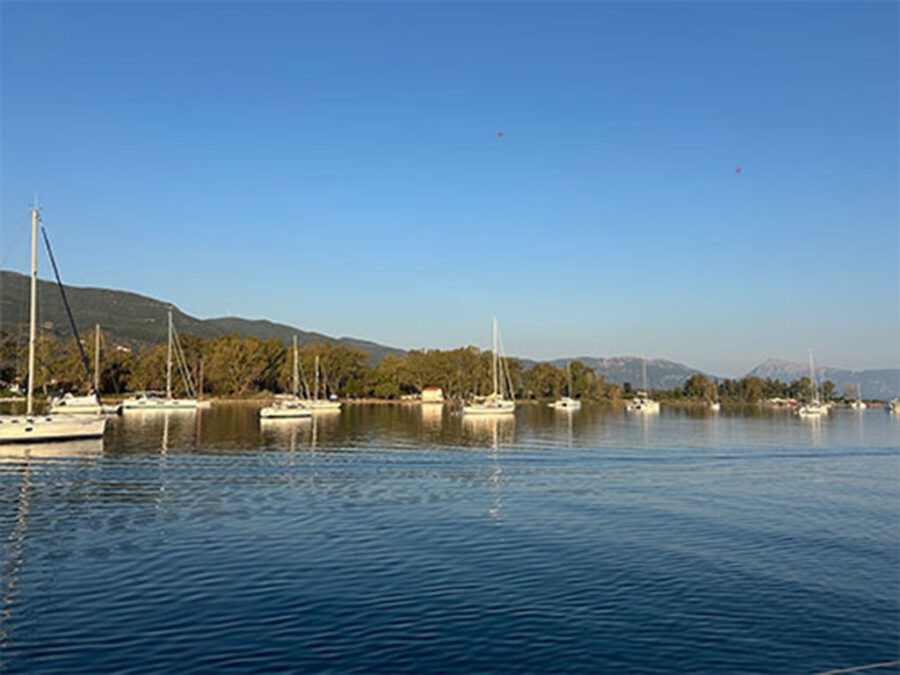About earthquakes, tsunamis and flotillas
Did I mention that Ka has had an earthquake warning app for some time now and monitors it several times a day? Turkey and Crete in particular are currently experiencing frequent rumblings. We were only 50 nm away from Crete at the next point, just as there was a 6.1 quake. Quakes are not nice, but tsunamis are more dangerous for sailors. Whenever we’re in a bay and an unmotivated wave rolls in, Ka says with a knowing look: ‘hmm, must have been another quake’. In the meantime, 4 and 5 quakes leave her cold. Without the app, we wouldn’t even know there were so many quakes.
Around Crete, 2,000-3,000 earthquakes are measured per year, but most of them are not noticeable. 100-200 are noticeable, but over magnitude 6 there is supposedly only one every 5 years. In this short year, however, there have already been two. The region is located on the Eurasian and African plates and is one of the most active earthquake regions in Europe. A few of our sailing friends are sailing around Crete and the Aegean and they report that it rumbles from time to time.
However, tsunamis are super rare. Statistically irrelevant, only every 150 years. Ka considers my comment that we certainly won’t be sailing in Greece for that long to be meaningless. I really hope no one comes, otherwise it would backfire badly that I’m making fun of her. About earthquakes, tsunamis and flotillas
Saronic Gulf About earthquakes, tsunamis and flotillas
From now on, however, we should be safe from even the most unlikely tsunami, because we have turned into the Saronic Gulf. This is the eastern end of the Peloponnese, with Athens just 30 nm away. This region is said to get super-mega-crowded in summer. In addition to the many charter boats, there are also the yachties from Athens who want to cool off in the hot summer with a bit of sea breeze. About earthquakes, tsunamis and flotillas
Summer is here
Speaking of summer: it’s suddenly summer. From 1 June and from one day to the next. As if with the flick of a switch, we’ve had constant sunshine and temperatures of over 30 degrees, sometimes even over 35 degrees, since then. And it’s set to stay that way. We’ve packed away the long trousers, unpacked the hats and upped the dose of sun cream.
Poros Island
A stone’s throw away from the Peloponnese lies the island of Poros. It is a popular sailing destination because of its favourable location in the Saronic Gulf. Just under 4,000 people live on the island of Poros, most of them in Poros Town. It is a small tourist town, mainly catering for yachties and the Greek navy stationed here. Not a must-see, but quite ok.
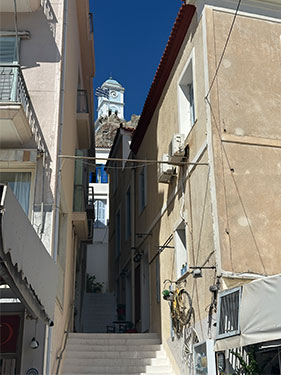
There are several anchorages on the west side, in somewhat murky water and with plenty of ferry traffic. The community dock offers plenty of space, around which countless charter boats jostle in the afternoon and occupy every meter until the evening. We were looking for more peace and quiet and less stress and opted for the anchorage on the east side, in Ormos Porou. The water there is clear and clean, great for swimming and good for making fresh water. We reached the town in 5 minutes by dinghy via a small canal. About earthquakes, tsunamis and flotillas
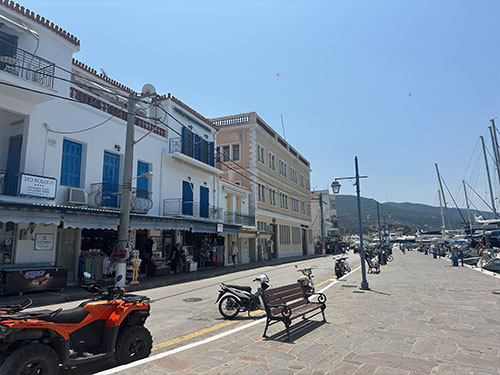
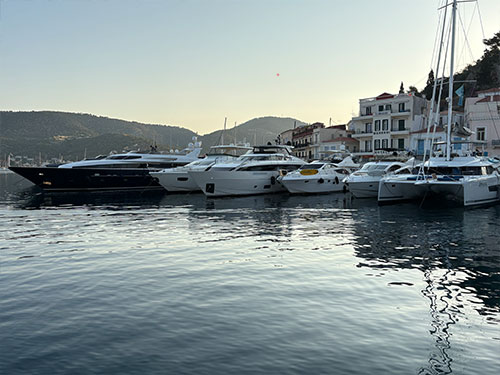
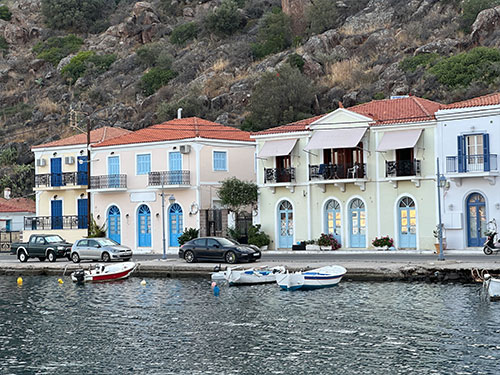
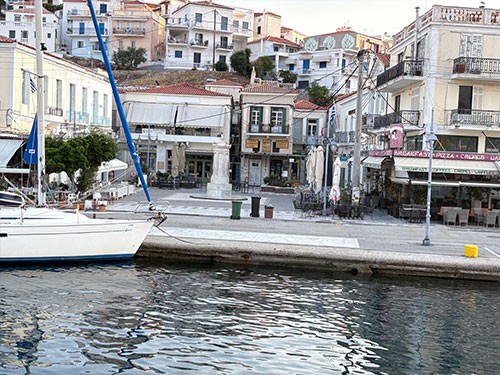
When we arrived 2 vessels were anchoring with us in front of the Greek navi base, which entertained us with their military stuff, with marches, hymns and blessings.
The good news for NATO: at least the Greek Navi soldiers have the Orthodox divine blessing. What could possibly go wrong?
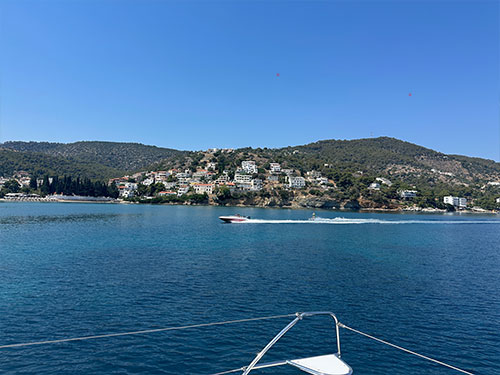
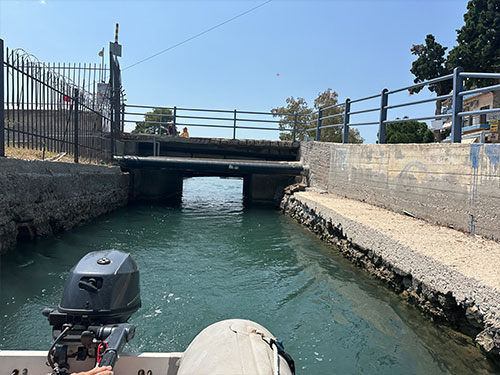
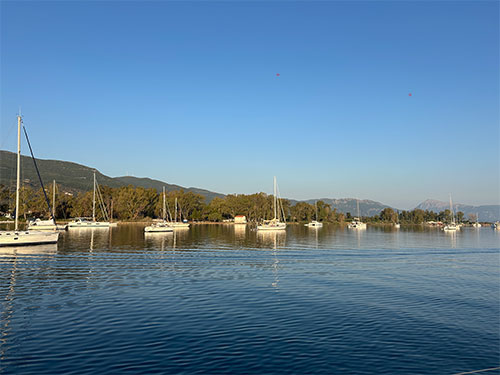
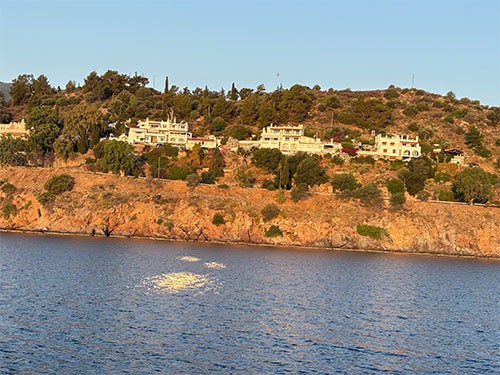
There are nice, but unusually expensive, tavernas on the beach. A nice place to meet up with our Australian sailing friends Helen and Ian, who we haven’t seen for a year – and to celebrate lovely Helen’s birthday.
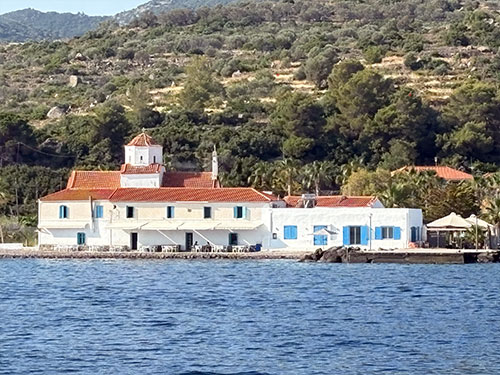
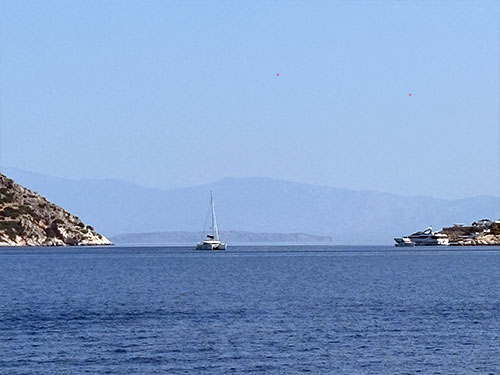
On our way from Poros to Korfos
Weather again – or maybe not?
We would have liked to stay longer, but it was the weather again that drove us on. When we set off, we were sharing the anchorage with 14 other boats. The weather forecast for this week is very strange. The winds in the Saronic Sea and parts of the Aegean are expected to reach 40 knots for almost a week. With bright sunshine and heat. From Tuesday to Sunday, mostly from northerly directions. However, we now know what to make of the weather reports. About earthquakes, tsunamis and flotillas
Korfos About earthquakes, tsunamis and flotillas
Nevertheless, we are preparing for the worst-case scenario – and that doesn’t fit in with our plan to approach the Corinth Canal and make a few stops along the way. We cancelled all places without wind protection to the north. Even those without protection from the swell. Our choice fell on Korfos, a village of 300 people, situated in a sheltered bay. It is surrounded by mountains, also to the north. In theory, we should be able to weather well here, even if we can’t estimate what the carabatic winds have to offer.
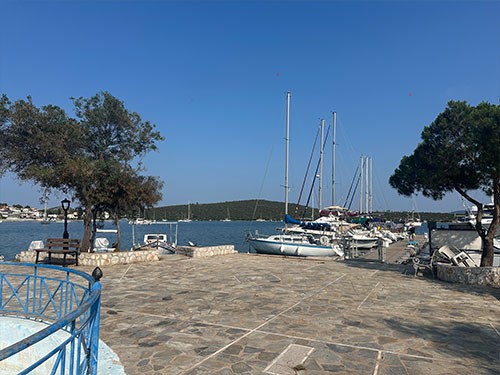
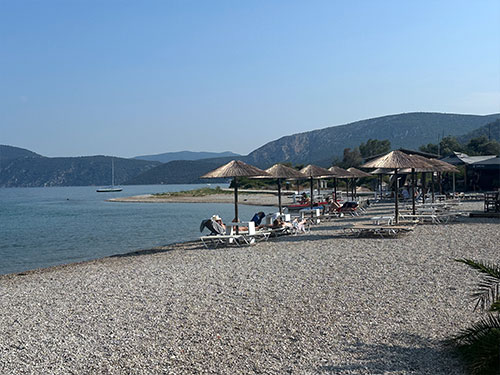
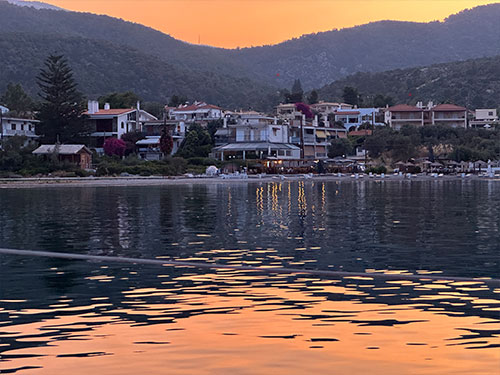
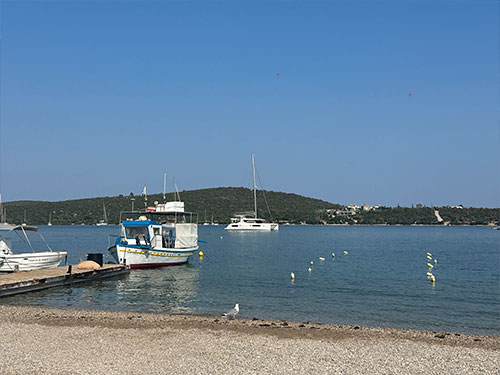
Laydback Korfos
We reached the bay before the weather and anchored with plenty of chain. Despite its size, this bay doesn’t have much of an anchorage because it slopes very deeply towards the centre. There is also a jetty, but ‘in weather’ (and otherwise 🙂 ) we prefer to anchor. Korfos is pretty much the opposite of Poros. It is deeply relaxed, untouristic and unexcited. Well, there’s no reason for it, because there’s nothing going on here.
Sea turtles
After the dolphins on our last trips, we saw our second favourite sea species on the 30nm way to Korfos: sea turtles. Here they are loggerhead turtles. They are not as playful and curious as dolphins, more aloof and dignified. After all, a single one can live up to 80 years. These species have been travelling the seas for almost 60 million years and remind us that we are only guests and must behave considerately at sea. About earthquakes, tsunamis and flotillas
In the bay of Korfos we saw quite a few swimming around the Rivercafe. However, they are even shyer than usual. Still, it’s nice to know that they feel at home here.
More and more flotillas
And that thought brings me to a bad example of how to deal with the seas: Flotillas. About earthquakes, tsunamis and flotillas
Flotilla sailing is a phenomenon that I simply don’t understand. 10 or more ships, crammed to the limit (or beyond) with people. Outwardly they often resemble refugee vessels, but on closer inspection they resemble hang-over centres. They take off together and descend on the target like locusts.
Where one or two flotillas land, nobody wants to be. There are few exceptions, because normally three attributes predominate: loud, reckless, encroaching. Too many people in nature. They manage to turn the most peaceful bay into a beer mile of Mallorca. Other species – animals and humans – then have no choice but to flee.
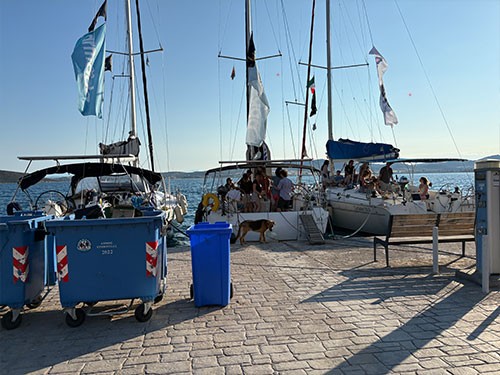
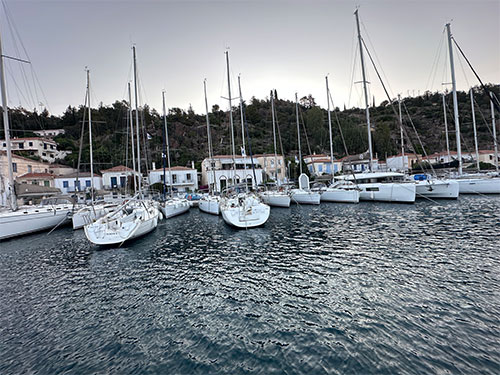
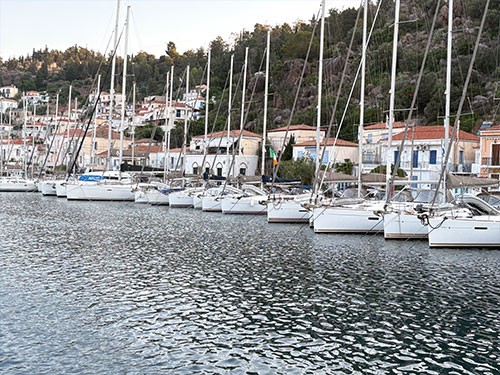
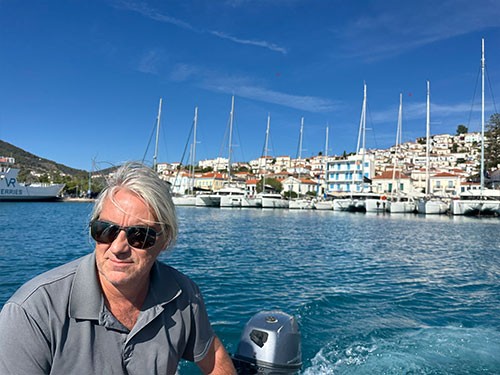
Flotilla impressions
The good thing is that these armadas follow fixed schedules and we can therefore usually avoid them. The people accompanying these party boats are very understanding of the sailors’ need to avoid flotillas. They are also understanding when it comes to sharing routes and schedules. We therefore cancelled some destinations, such as the island of Dokas.
Corinth Canal ahead
We are now waiting to see what the weather has planned for us over the next few days. There is a good chance that it will turn out differently. We’ll see when we will reach the Corinth Canal. / Holger Binz

